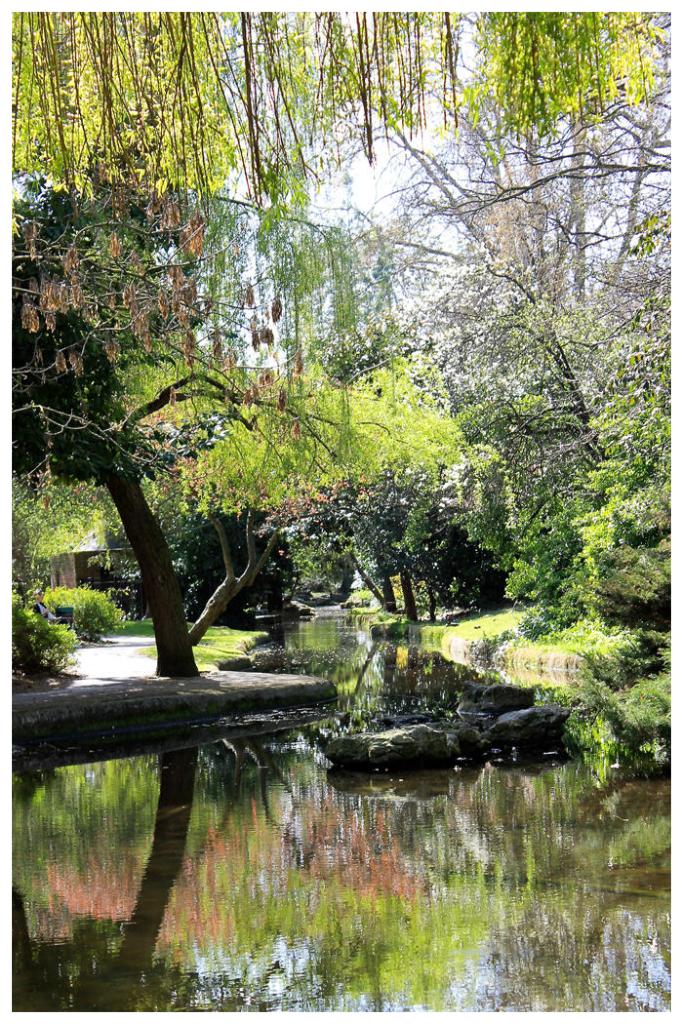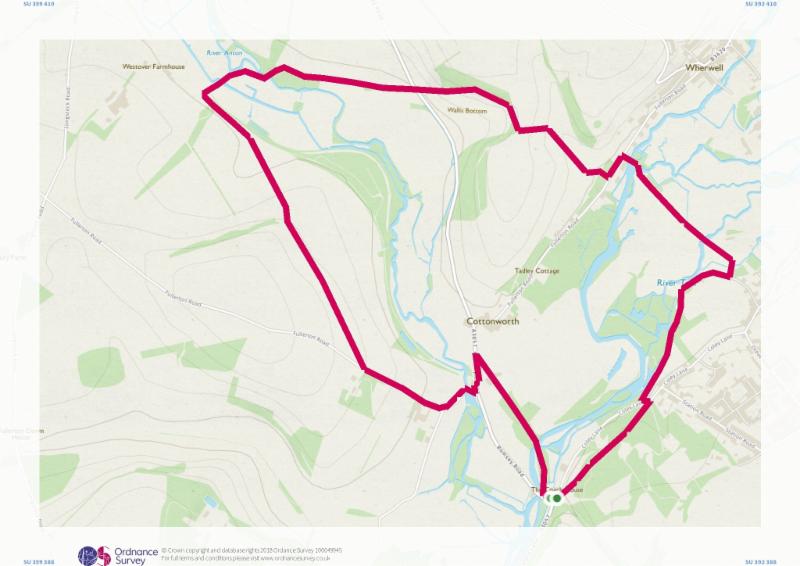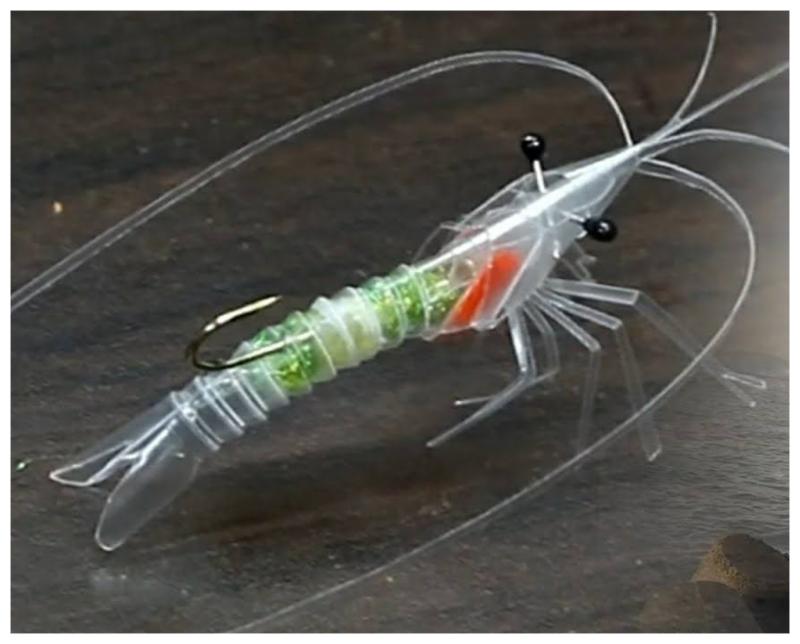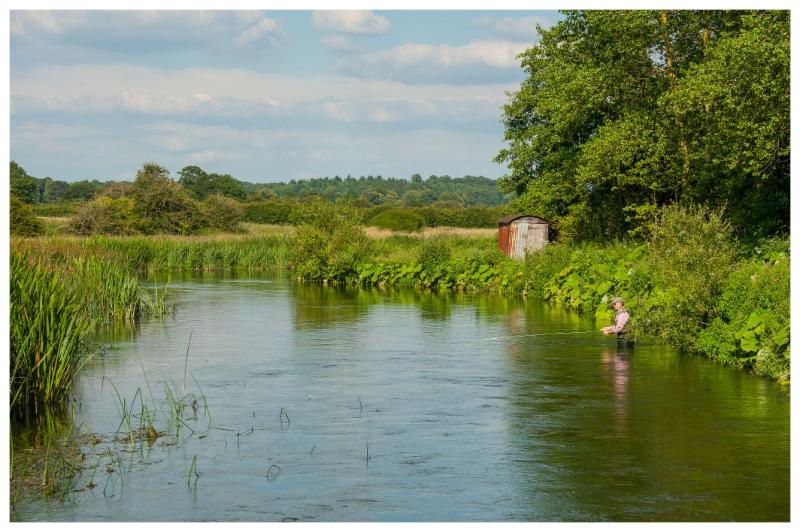Greetings!
I can barely believe that a year has
passed since TOT (The Otters' Tale) as we nicknamed it, came out in
hardback. It has been a somewhat hectic time with talks, awards and articles as
the book sold so well as to go to reprint.
 | |
| Footprints in the snow |
Of course, I was lucky to
have Kuschta living here at Nether Wallop Mill for three years. She wasn't the
most compliant subject for observation, but her almost daily presence and the
routine along the Wallop Brook gave me enough scope to intrude on her
life.
Sadly I fear the worst for
Kuschta; I have not seen hide nor hair of her since last summer. She would be at
least six by now; five is a grand old age for otters and successfully raising
two litters is a notable landmark. Our sole otter presence is a young adult, one
of her offspring. He, or perhaps she, is currently living somewhere upstream of
The Mill, which is strange as that means this otter is in the village rather
than the desolate Badlands below.
 | |
| Caught on camera |
She comes down the mill
stream, hauls herself up the bank just below my bedroom window, traverses 30
yards of garden and Brook to silently slide into the trout lake as you will see
by the photo.
Sometime later she returns
via much the same route, I can only assume fish-in-mouth, as there is no blood
red slush of a dining area unless she has taken to eating on the island.
The Otters'
Tale came out in
paperback yesterday. It is available in all good bookshops or on-line via Amazon or Waterstones.
Editors note: I wrote the
first draft of this on Monday and the following night I heard the tell-tale
eeking of meeting otters. Maybe we'll have a new family soon ....... they must
know the first stocking is due next week.

Trout
fishing in the metropolis
As you read this we'll be very much
out of our natural environment, battling our way on the Northern Line to the
Business Design Centre in Islington for the first day of the London Fly Fishing
Fair.
 | |
| The New River |
That said north London is
not completely alien to our pure rivers. The River Fleet (the same one of Fleet
Street nomenclature) ran from Hampstead Heath, past Kings Cross, down what is
now Farringdon Street, under Holborn Viaduct to join the Thames at Blackfriars
Bridge. I could be wrong
but I don't think any part of the Fleet remains visible today, what is left all
being underground.
However, you can still see
the remnants of another ambitious plan when nineteenth century town planners
created a completely new chalkstream to bring clean water to a rapidly expanding
north London. Less than imaginatively called New River you can still see parts
of it today in Canonbury Gardens Park, ten minutes walk from the Design
Centre.
If you would like to see us
we will be on stands 56/57, sharing with Farlows. We are overlooking the casting
pool.
The show hours are 9am-6pm
on both Friday and Saturday.

Fancy a walk?
Recently I was asked to write a brief piece for The Guardian
Lifestyle section for their Top 10 spring walks in the UK.
Now I'm lucky enough to be able to tramp up and down our many miles of
chalkstreams, but the brief demanded somewhere everyone could go. This had me
dragging out my trusty Ordnance Survey map and piecing together what is , though
I say it myself, a rather good route with the reward of beer at the end. Here is what I wrote:
 |
| Chibolton Cow Common |
Length | 5 miles/2
hours
Grade | Easy
Trains on the Spratt &
Winkle line once steamed their way to London with a daily consignment of the
watercress that still thrives on the banks of the chalk-rich Test. Today the
disused line is the perfect path from which to catch glimpses of the gin-clear
water, pausing on bridges to see trout, fresh from the deprivations of winter,
gulping down olive mayflies that alight on the surface.
Soon you turn from the old
track to head up the chalk downs. These absorb the winter rains, filling the
aquifers from which these chalkstreams spring. As the path takes you to higher
elevations, you'll see in the valley below, between green shooting wheat and the
soon-to-be-yellow rapeseed, rows of vines: this is English champagne country,
with vineyards such as Cottonworth, which produces a classic cuvée and a sparkling
rosé. The chalk seam here runs south for hundreds of miles, finishing in the
Champagne region of France.
Dropping back down to the
river plain, you come to Chilbolton Cow Common, now bursting into spring bloom.
Tall flag irises are still curled inside their buds but the marsh marigolds
splash vivid yellow along the banks. Mallards fight for mates, and water voles
duck and weave between the reeds eager to build the first nest of the season.
Finish at the riverside Mayfly Inn in Fullerton, with local beer, local bubbly and
local trout on the menu.

QUIZ
Last time we had prizes! Well done to Chris Rocker who won the pair of
tickets to the London Fly Fishing Fair.

1)
What is a Koch snowflake?
A mathematical curve resembling a
snowflake.
2)
Who wrote Salmon fishing in the Yemen?
Paul Torday
3)
The coarse fishing season closed on what
date? 15 March
No quiz this week, but a
rather a quirky video. But before you watch do take a look at the photo to take
a guess at what the shrimp pattern is made from.
I have to confess this is not
the most all action You Tube clip you will ever watch, but it is a cunning bit
of plastic origami. Maybe just fast forward through some of it. Click here to watch
Hope you are able to make it to
the
Fair.








